Fiesta Celebrates its 100th Birthday
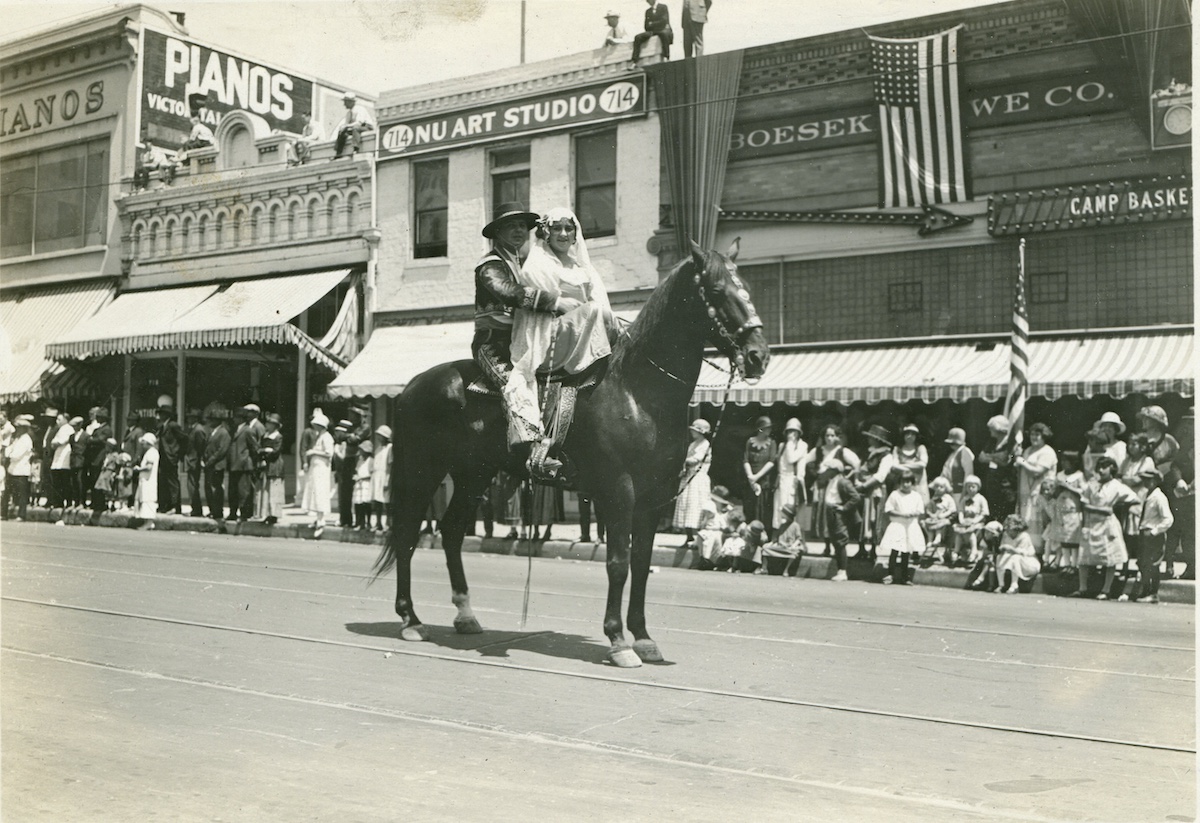
Old Spanish Days Fiesta is rooted in the dozens of short-lived attempts to establish an annual festival in Santa Barbara, starting, perhaps, with the 1886 Mission Centennial celebration. In 1924, the fiesta that was created to celebrate the opening of the new Lobero Theatre succeeded spectacularly. This year marks its 100th year anniversary.
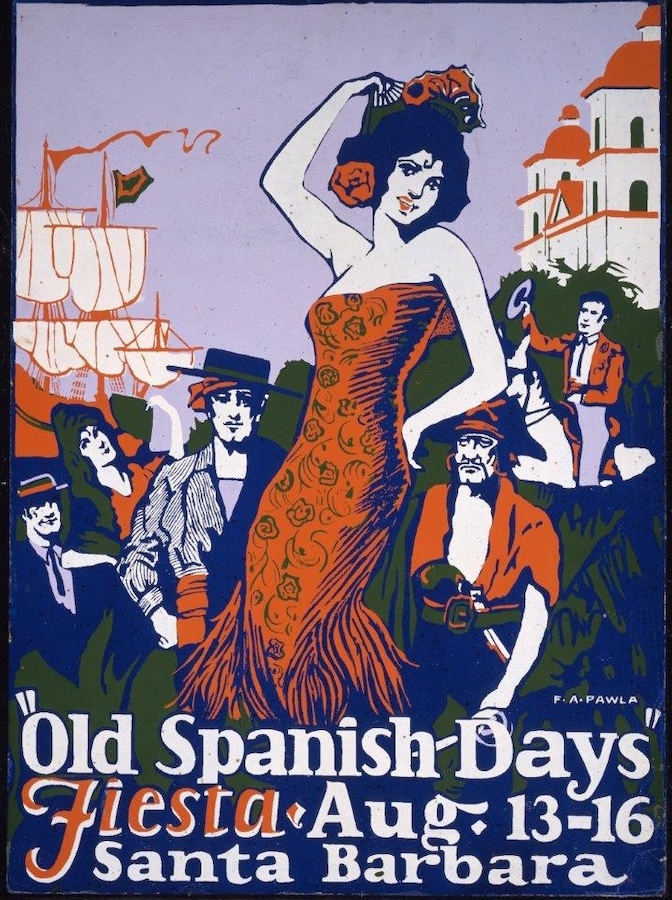
Months of preparation and the cooperation of scores of local businessmen, merchants, and civic leaders was needed to create the celebration of Santa Barbara’s Spanish origins. The young executive director of the Community Arts Association, Hamilton MacFadden, started the ball rolling and set the stage by organizing the initial meetings and calling on businesses to supply 200 artistic floats. (MacFadden later became a well-known actor and director in Hollywood.)
Local merchant Charles Pressley became coordinating director for the Fiesta activities, and Dwight Murphy organized the equestrian elements for the parade to which he personally provided substantial funds. Posters advertising the event were sent to San Diego and San Francisco and all places between. A bevy of girls, attired in striped black pants topped by braided bolero jackets, helped advertise the festivities. Heads covered by fringed Spanish bullfight hats, they met Southern Pacific trains and distributed nosegays to passengers while encouraging them to return for Fiesta.
On August 13, the hotels were packed, and thousands lined the streets to witness the coronation of Madalynne Romero, who had won the contest for Queen of Fiesta. Two groups of pages bearing floral chains led the coronation cortege to the reviewing stand on Cabrillo Boulevard. Crowned by a circlet of fragrant roses, she was greeted by Juan Rodriquez Cabrillo, the first gallant courtier to pay homage and kiss the queen’s hand. Fiesta and civic dignitaries followed suit.
Impersonated by Robert J. McCabe, manager of the Arlington Hotel, “Cabrillo” had sailed around Castle Rock on the San Salvadore (aka the Rosamond) and anchored off of West Beach before setting out in a lighter to land at the beach with his shipmates where he was greeted, according to the news reporter, by “primitive redskins in war paint and feathers” (aka the Kiwanis Club). The entire scene, of course, was ahistorical. Cabrillo never set foot on terra firma in Santa Barbara, and the native Chumash residents never greeted him enthusiastically while wearing war paint.
El Desfile Historico
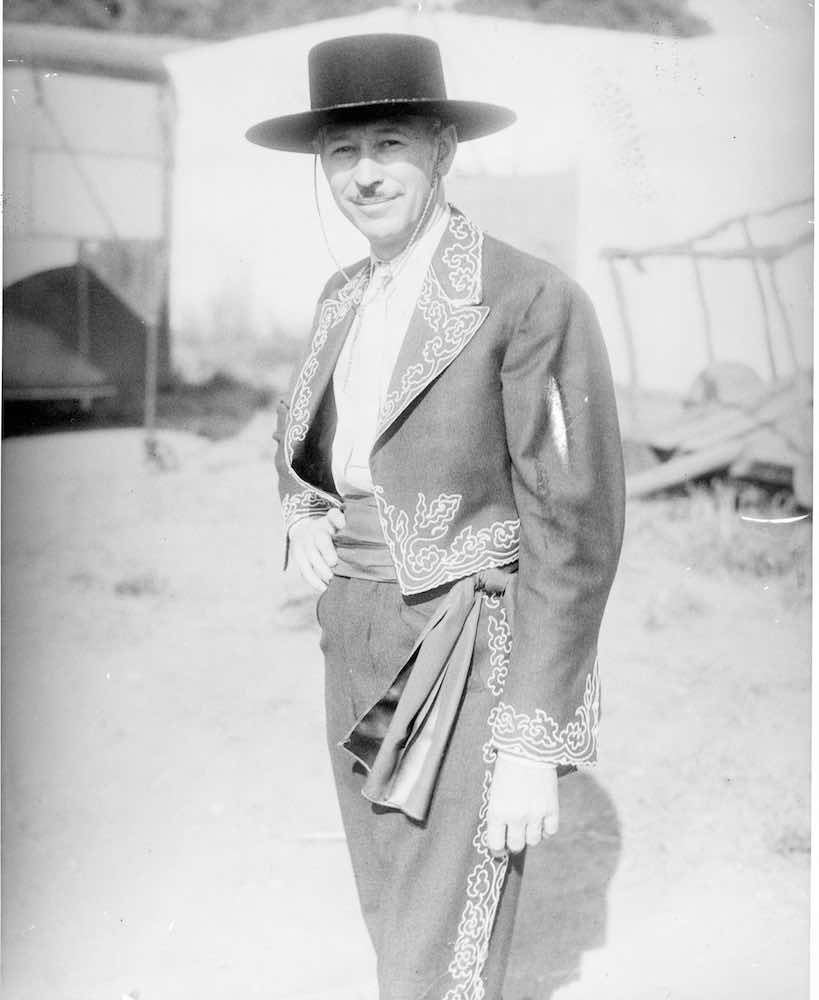
After kissing the royal hand, Cabrillo jumped into an automobile to take his spot in the parade that stood waiting at Sola Street. Once he arrived, the Elks drum corps commenced their rat-a-tat thrum and marched smartly down State Street. The Kiwanis in war paint and feathers followed, and then Cabrillo and his pikers. Then, in mostly chronological order, came the missionary padres played by the Santa Barbara Elks, followed by the Spanish soldiers led by Commandante Lopez of the Santa Barbara Spanish Garrison and his musketeers. Several of them shouldered authentic relics of Presidio days.
Next came the horses; Dwight Murphy on his palomino and Adolfo Camarillo on “Sultan,” his pure white horse and progenitor of the famous Camarillo White Horses. Murphy had taken charge of the equestrian portion of the parade and between the beauty of the horses and the glamour of the tooled leather saddles, it was quite a spectacle.
The steeds came from the most famous ranchers in California. When they reached the reviewing stands the trained horses and riders put on an extensive show of tricks and dances, much to the delight of the audience. Following the equestrians came dozens of carriages with vaquero outriders, followed by early day wooden carretas drawn by oxen. All were carrying members of the early Spanish families in Santa Barbara and Ventura.
Last but not least came a wagon carrying a group of “white haired but gay and vigorous dancers,” who were roundly applauded.
A Plethora of Activities
The organizers of the four-day festival strove to find something to appeal to everyone. There were two rodeos at Pershing Park (today’s baseball field), and diving and swimming races at the beach. A greased pig contest and a tag balloon race for the kids competed for attention with the aerial acrobatics organized by Earl L. Ovington. (Ovington was the first U.S. airmail pilot, and a lab assistant to Thomas Edison. Earl lived in the Samarkand area and his air strip is today’s Municipal Golf Course. His daughter Audrey later owned and ran Cold Spring Tavern.)
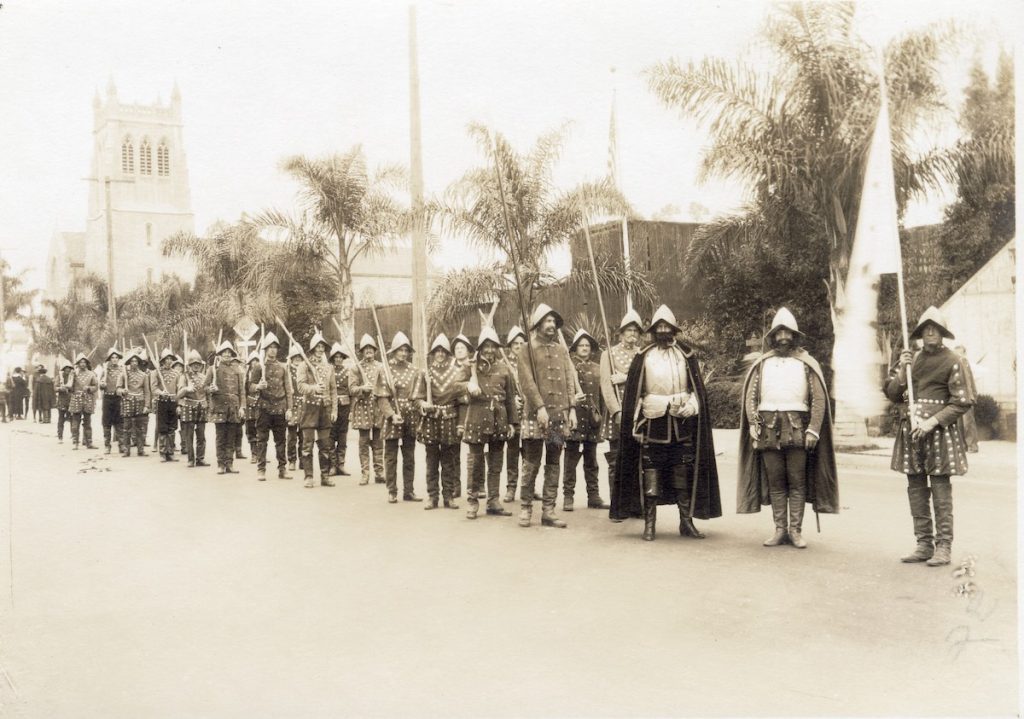
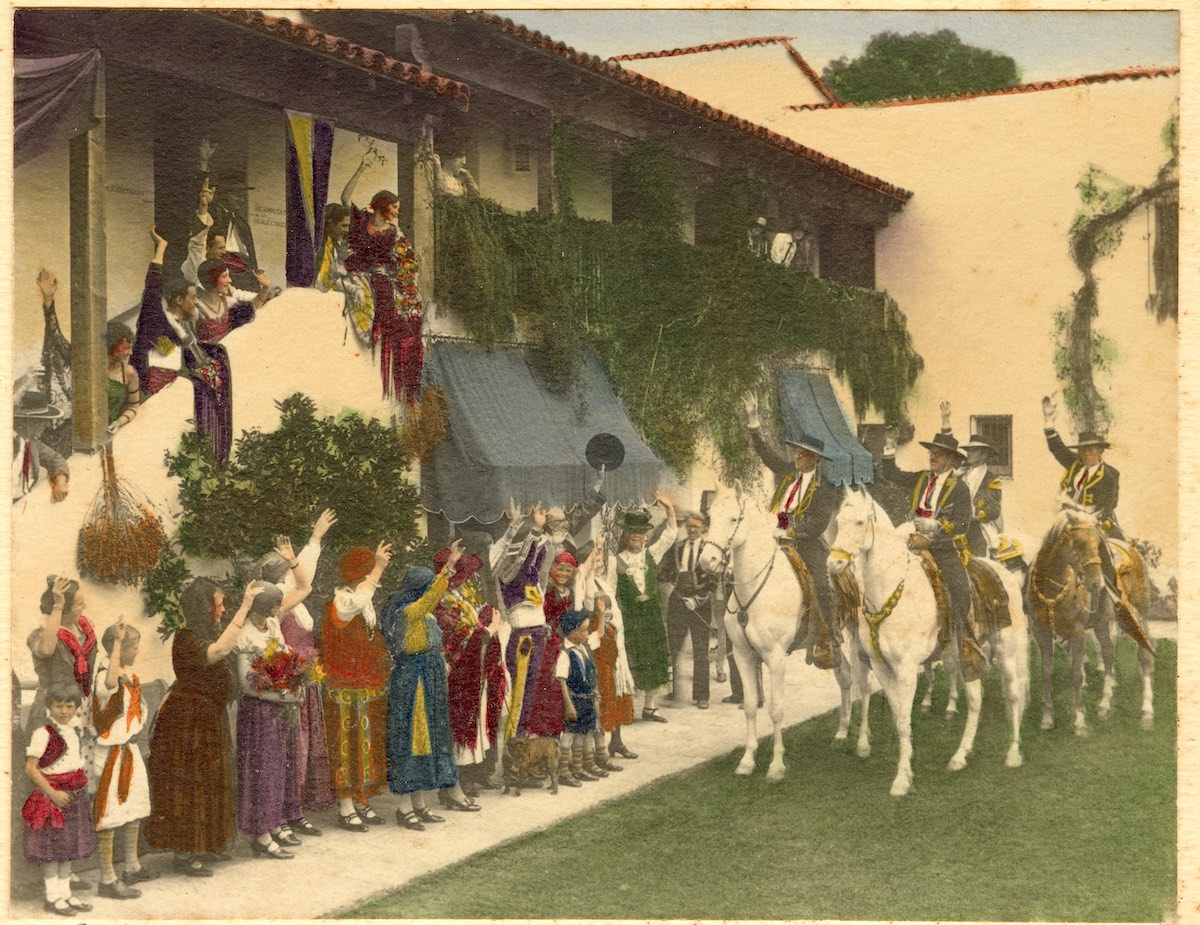
And there was music and dancing everywhere! The last night’s street dance on Carrillo Street was so well attended that the dance floor was inadequate to hold the dancers. Bernhard Hoffmann’s El Paseo complex became a focal point for concerts and dancing as well, and the Maria de Los Angeles Ruiz dancers performed at a dizzying number of venues.
After the fourth day of celebrations, the Morning Press reporter was able to say, “A blaze of entertainment features ushered the fiesta into the past… The riot of life, color and laughter reached its crest on the streets last night. Men, women, and children seemed for the first time really to forget their repressions and mingle in a frolicking democracy of merriment.”
The Modern Parade
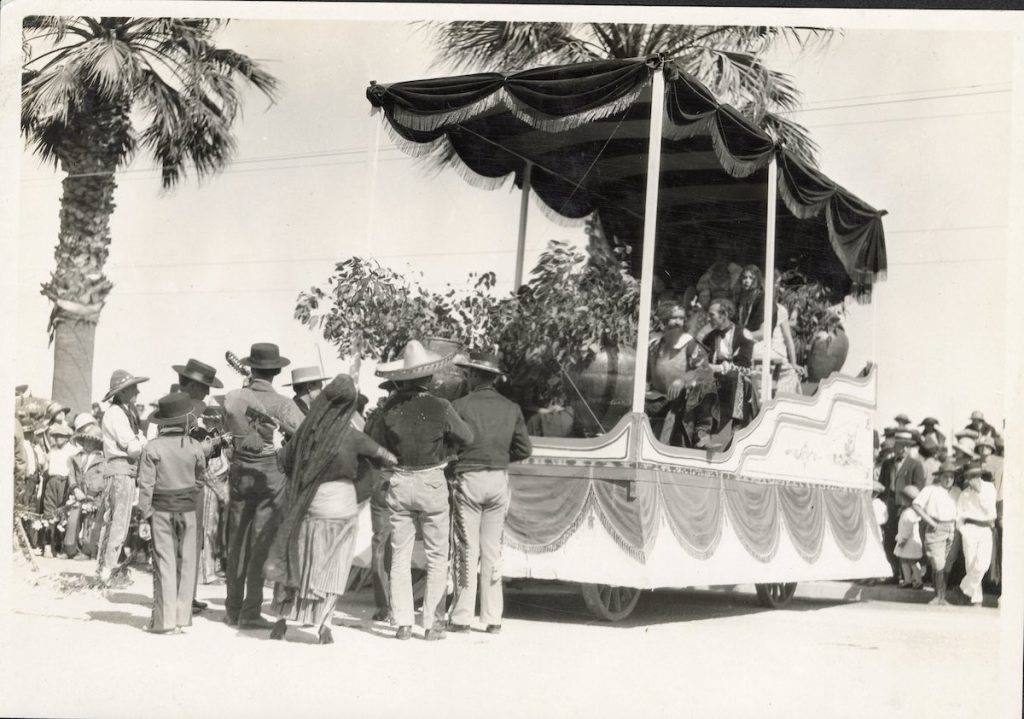
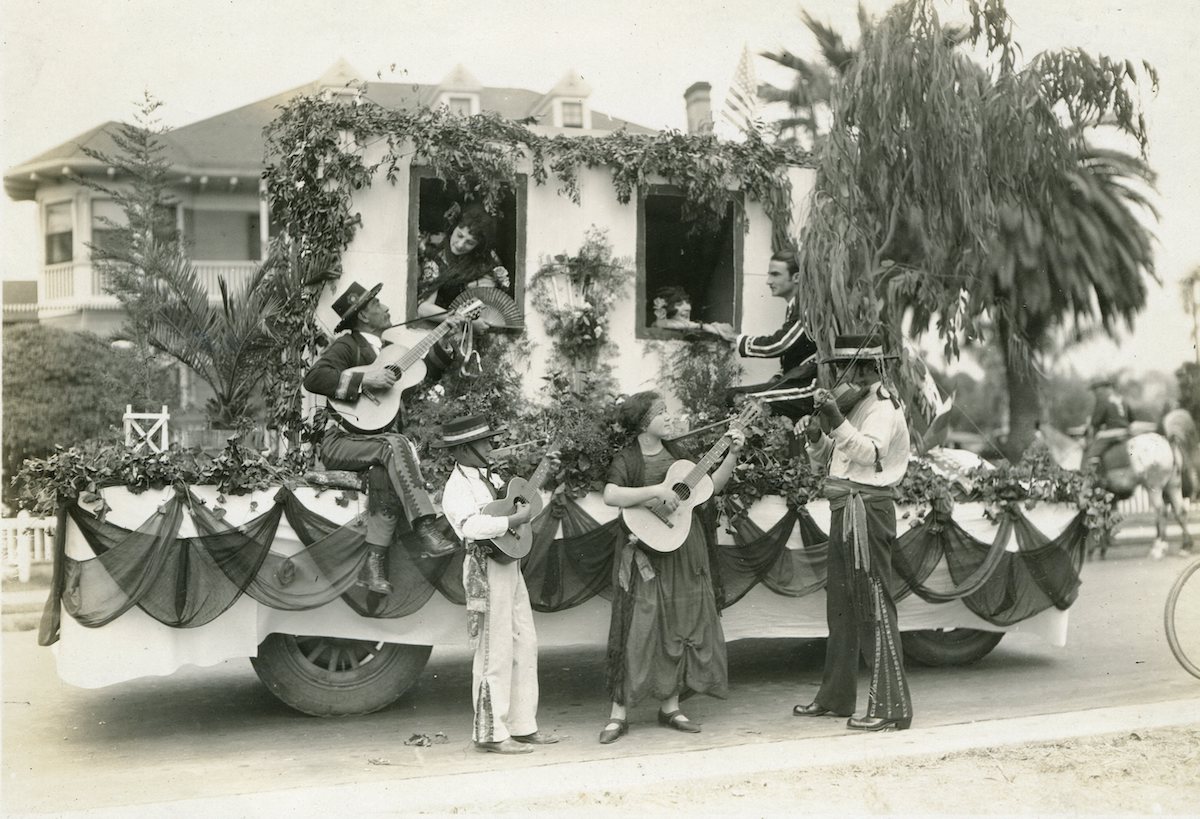
On Saturday morning, throngs again lined State Street. This time for a modern parade which was headed by a platoon of local policemen. Following were representative groups from nearly every civic organization and lodge in town. The American Legion marched completely equipped down to tin hats and gas masks. The Scots band, dressed in brilliant lavender-and-white uniforms, provided music. The Rotary Club entered a floral float representing a ship. It was piloted by Elmer Awl of the Yacht Club who used the occasion to express their frustration regarding the lack of progress for yachting enthusiasts with signs that read: “Where’s my harbor?” and “I want a harbor!”
The Humane Society’s entry in the procession was a small animal ambulance, and the Bolton & Jones float carried an entire jazz orchestra. The Eagle’s drill team and groups of children on decorated bicycles mingled with a cavalcade of cowboys and vaqueros. Queen Madalynne and her ladies in waiting joined the parade in their float. The Community Arts Association entered a flower-bedecked touring car carrying members of the cast of Beggar on Horseback, the opening play of the Lobero Theatre whose inauguration had inspired the raison d’être behind the fiesta.
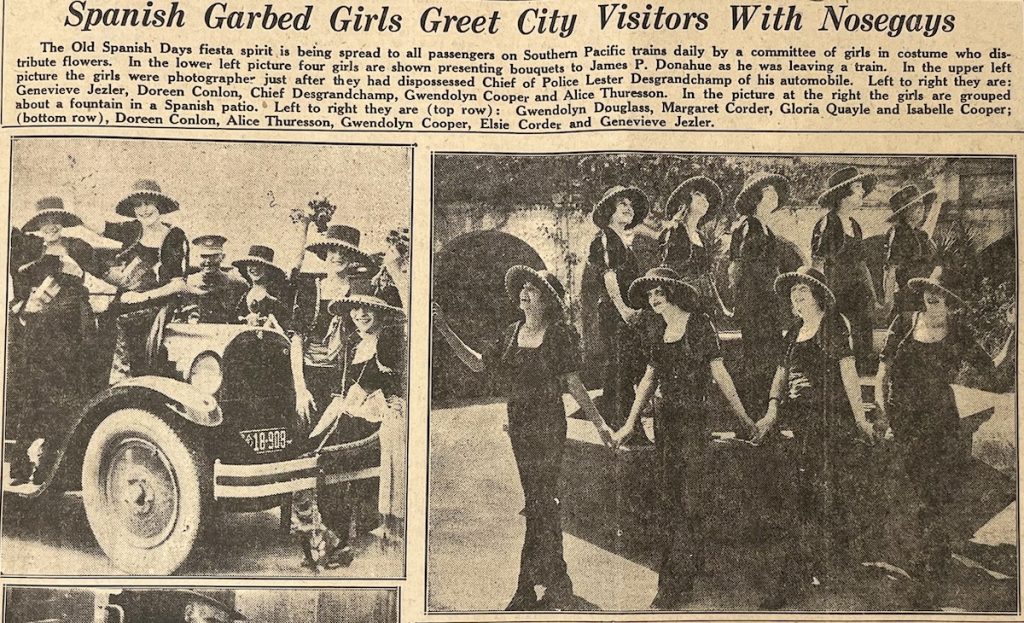
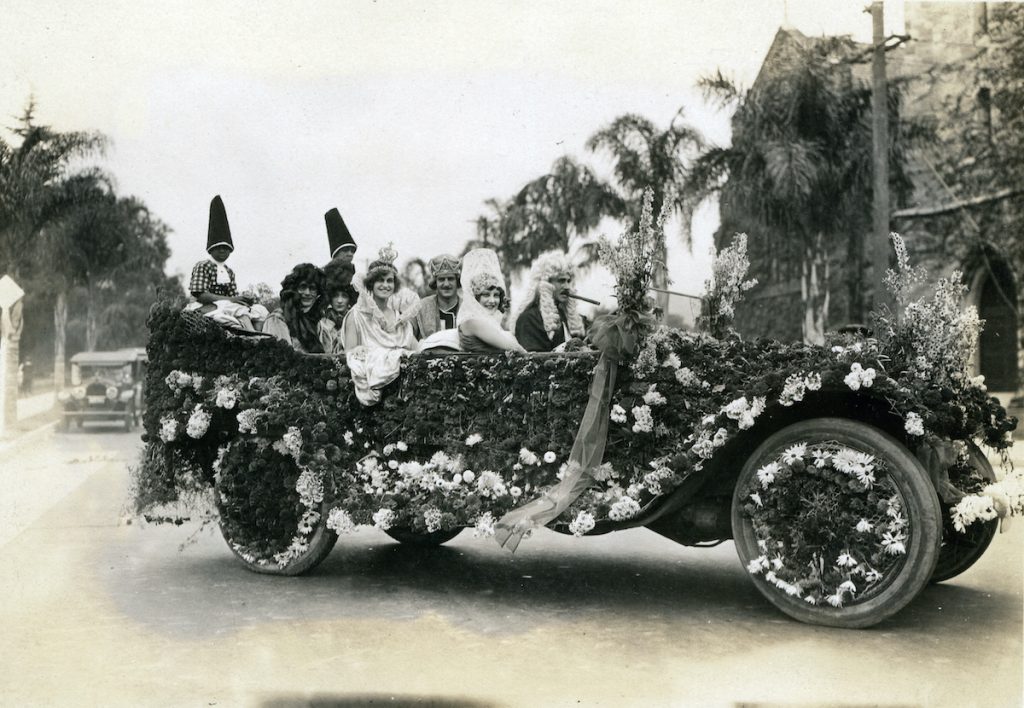
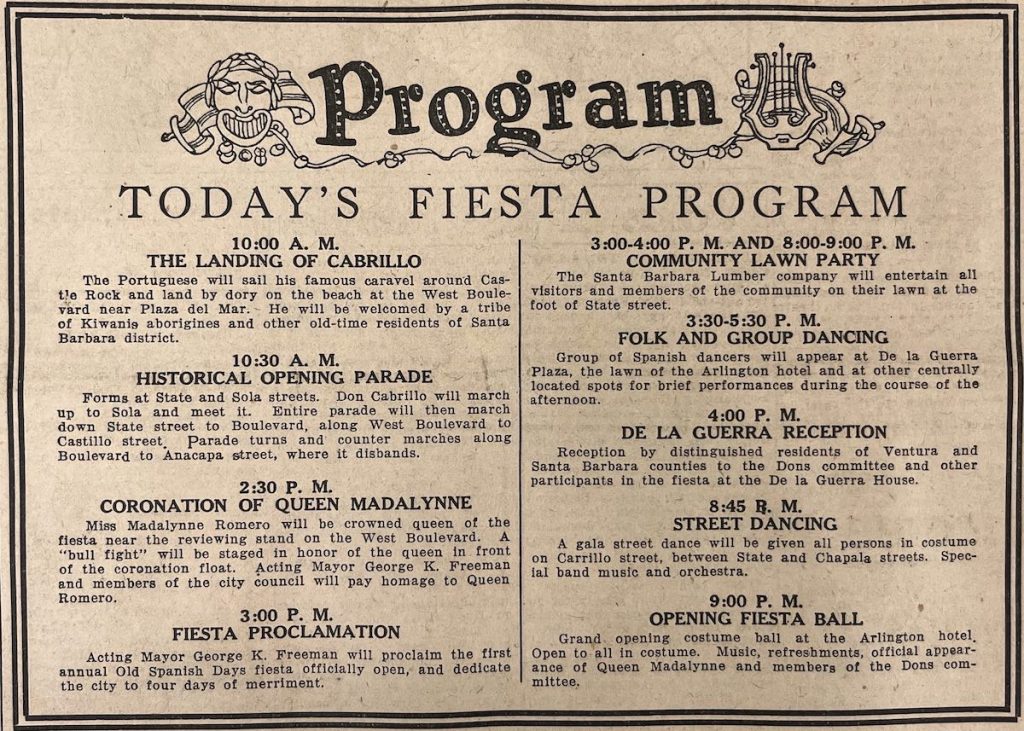
When it was all over, the Fiesta organization found itself solvent and enthusiastically prophesied they had found a solid, long lasting annual event. Hopeful thinking at the time has been proven accurate as Santa Barbara’s Old Spanish Day’s Fiesta prepares to celebrate its 100th anniversary. Feliz cumpleanos!
This year’s Old Spanish Days Fiesta begins on July 31st and ends on August 3rd. Many groups in town will be hosting celebrations in connection with Fiesta. Three of these celebrations are offered by the Santa Barbara Historical Museum which has furnished these historic images and has a new Fiesta exhibit for the occasion.
On Friday July 12, the “Fiesta Centennial Celebration” in the galleries and courtyard of the museum offers a taco-and-dance party and cultural performances, with music by Area 51.
On Thursday, July 18, the museum hosts “Tablao del Museo,” an outdoor flamenco performance with artists from Santa Barbara and Spain.
On Friday, July 26, “Una Fiesta de los Adobes” provides an elegant evening of history, dining, and dancing in the courtyard in support of the treasured 200-year-old adobes which have played host to Fiesta celebrations since 1924.
Go to www.sbhistorical.org/events for details and tickets







You must be logged in to post a comment.